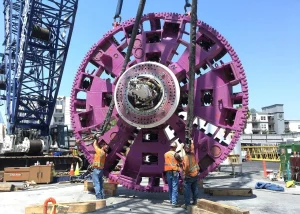MTA selects DXC to revamp asset management system
Written by Kyra Senese, Managing Editor
DXC Technology (DXC) has been selected by the New York Metropolitan Transportation Authority (MTA) to transform its enterprise asset management capabilities and support its digital transformation.
The multi-year engagement will allow DXC to deploy a next-generation enterprise asset management (EAM) solution to help the MTA plan, track and optimize maintenance activities of MTA assets and infrastructure for its 236 route miles.
Transportation organizations in general, especially public sector agencies, have often formed through the merger of smaller agencies, said Christopher Lund, partner, digital industry consulting at DXC Technology.
“In the case of the MTA, they have acquired a number of agencies that go back to the mid-1800s, when they were competing public transportation systems within the metropolitan New York area,” Lund explained. “As it’s grown together and matured into what it is today, these various segments that are now under the MTA organization, for the most part, retained their original asset data…and the MTA had approximately 80 repositories for asset information.”
Lund explained that there has been a push within the past five years to form a stronger top-down umbrella supporting organization, the MTA HQ. He said public transit agencies are struggling for funding to either meet needs for expansion or for the reinvestment in their infrastructure maintenance and upgrade, and having a more centralized asset management system will enable the MTA to prioritize its maintenance efforts and spending.
“It’s really difficult, if not impossible, for [MTA] currently to evaluate and have a view of their infrastructure renewal needs or their expansion needs because the asset information is so disparate,” Lund added.
DXC said it has established a Center of Expertise in New York to implement best practices in asset management and performance, which includes DXC working with the MTA to hire and train engineering interns and graduates from local universities to support various aspects of the EAM solution.
“DXC and MTA are working together to improve the performance of rail assets and infrastructure, applying preventive and predictive solutions that will reduce unplanned downtime and service disruptions across the rail network,” said Carlos Lopez-Abadia, vice president and general manager, DXC Consulting.
Lopez-Abadia said he believes the EAM solution will enable the MTA to improve its on-time performance and the commuting experience for its 15 million weekly customers.
Implementing EAM best practices can enhance asset capacity and availability, resulting in cost savings over the life of the asset, DXC said. The firm also said utilizing these resources will allow for fewer disruptions in service and delays from equipment failures.
The MTA is working with DXC to implement a solution that will allow MTA employees to have real-time access to key information to keep trains operating safely and reliably. This is also expected to help deliver significant cost savings regarding maintenance activities and asset life cycles.
“With more technically sophisticated enterprise asset management solutions, the enterprise is finally seeing a clearer picture of its physical assets,” said Kevin Permenter, senior research analyst for IDC’s Enterprise Application and Digital Commerce practice. “This picture brings a complete view of the assets’ impact on the overall corporate financial position, which is also a significant factor in growth of the EAM market.”
DXC explains on its website that aging infrastructure and regulatory changes are changing the ways in which companies can effectively manage their assets.
“At the same time, business drivers and intensified regulatory systems are forcing infrastructure operators to increase efficiency and operational excellence,” DXC says online. “Fortunately, the next generation of digital asset performance management solutions can profoundly affect maintenance operations and the ability of field technicians to access the information they need to fix outages and maintain equipment with minimal disruption of service to customers. Deploying these solutions strategically manages risk and enhances performance by preventing equipment failures and maximizing production capacity.”





